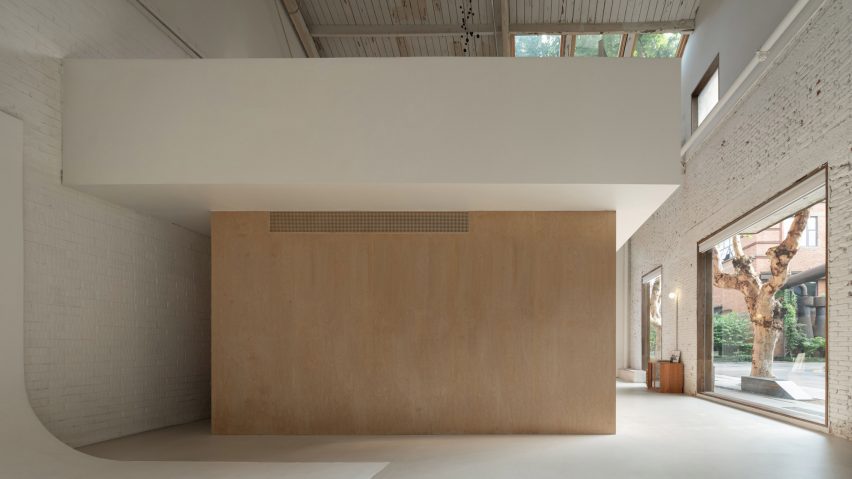A white-painted steel and timber volume that contains an office, dressing room, reception and studio space sits at the centre of this photographer's studio in an old factory building.
Located in a former factory building that looks out onto a busy T-junction near a park in Nanjing, China, HNS Studio was designed by architects Muhhe Studio for local photographer Huai Nianshu.
The studio began by removing all partitions and ceilings in the space to reveal a pitched timber roof structure.
"In the early summer before the reconstruction, we went to the site, after the old partition was removed, the high-rise space of the old plant was warm and transparent in the sunlight of the afternoon," recalled Muhhe Studio.
"The photographer himself is extremely sensitive to light. His only expectation for the new space of the studio is a 'transparent' space."
In order to capture the light, the studio used BIM software to simulate the movement of daylight across the space throughout the course of the day. In response to this study, the studio created several different-sized openings along the building's west gable end and roof to ensure that the space would be evenly lit at all times.
In addition, the architects inserted three large windows that function like a storefront for the studio and increase its connection to the street outside.
A two-storey structure that resembles two stacked boxes and contains all of the studio's amenties was built in the centre of the space. At ground floor level, an office, dressing room and toilet are clad in marine-grade plywood.
A set of stairs at the back of the plywood volume leads up to a floor wrapped in white-painted steel. This open top floor overhangs the space below and will be used as a large photostudio space with a reception and open-plan office.
The architects left the original factory space with its brick and plaster walls largely untouched to function as a "continuous and rhythmic open space".
The original street-facing entrance on the south side was moved to the back so that before entering the office, you now have to pass through a semi-enclosed courtyard.
"We pay attention not only to the indoor space, but also to the outdoor space, and even the relationship of the entire park, as well as the relationship between the history and the present of this space," the architects told Dezeen.
"We designed the space very delicately to allow users and visitors to enjoy it. [To be] people-oriented is our ultimate goal."
This project has been shortlisted in the small workspace interiors category of Dezeen Awards 2022.
Other projects in the category include a part-workspace and part-community hub in a sleepy fishing village in Taiwan, and a wine-bar workspace for a consultancy company in Sweden.
Photography is by Xiaowen Jin unless stated otherwise.

